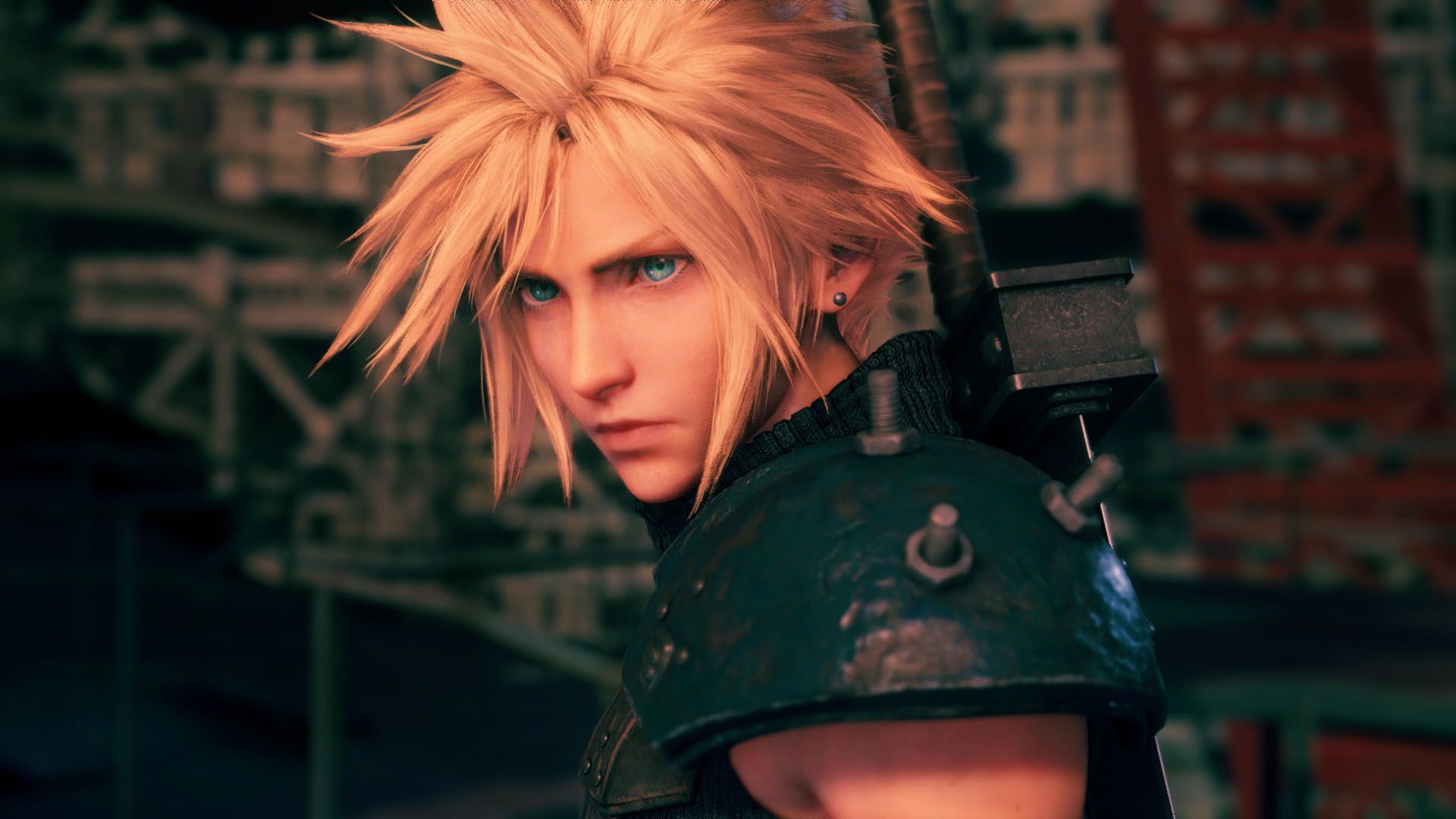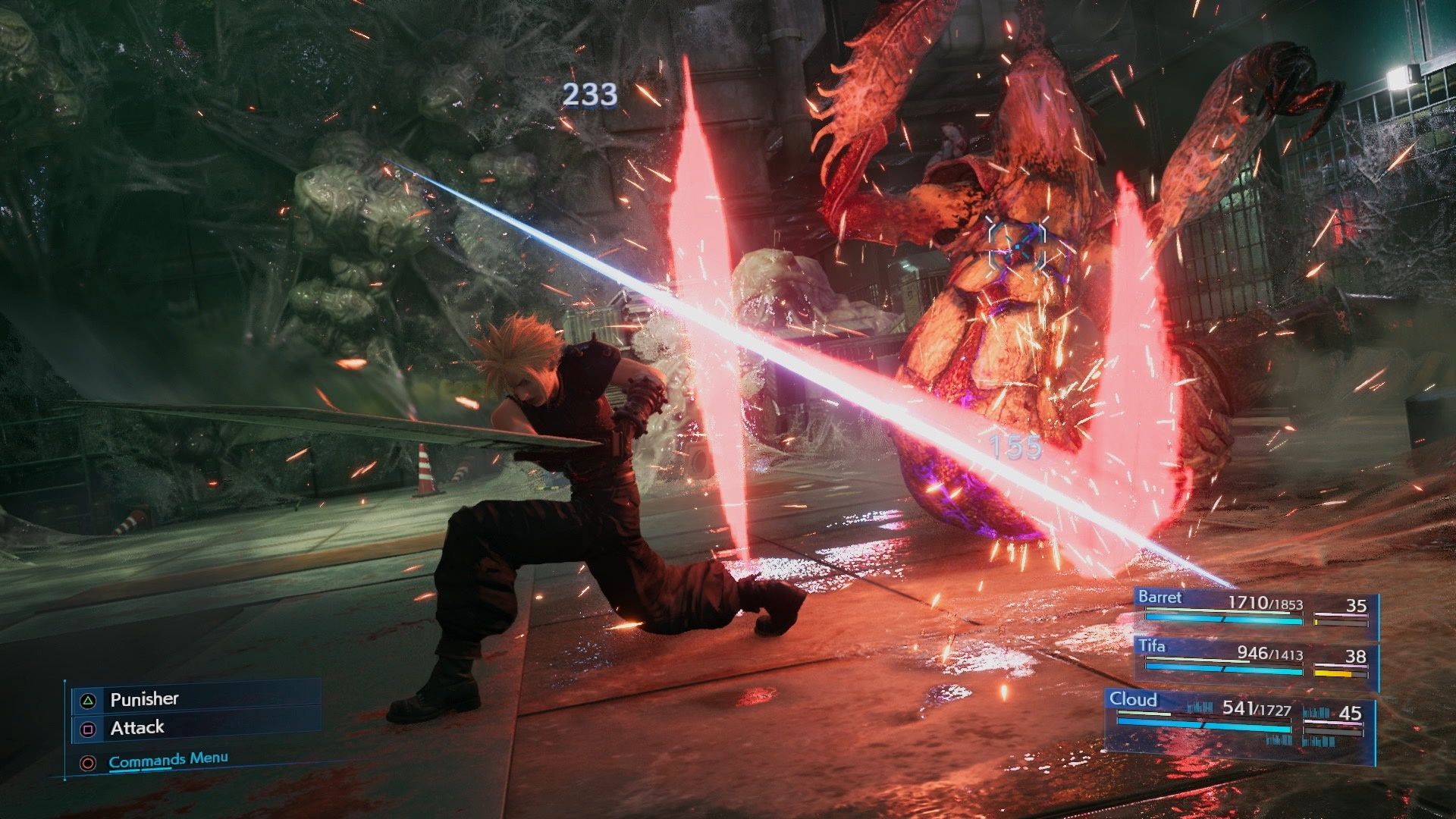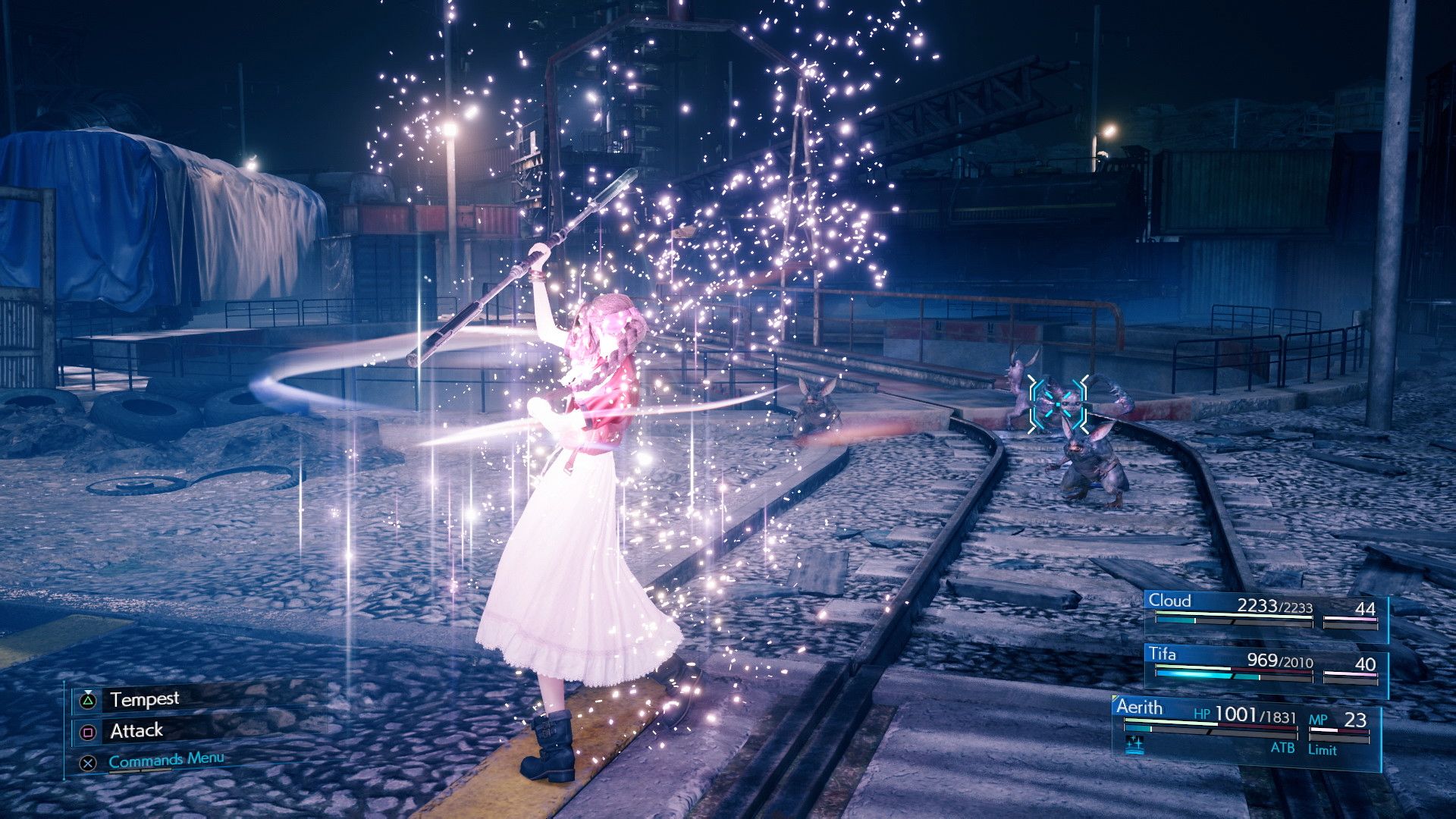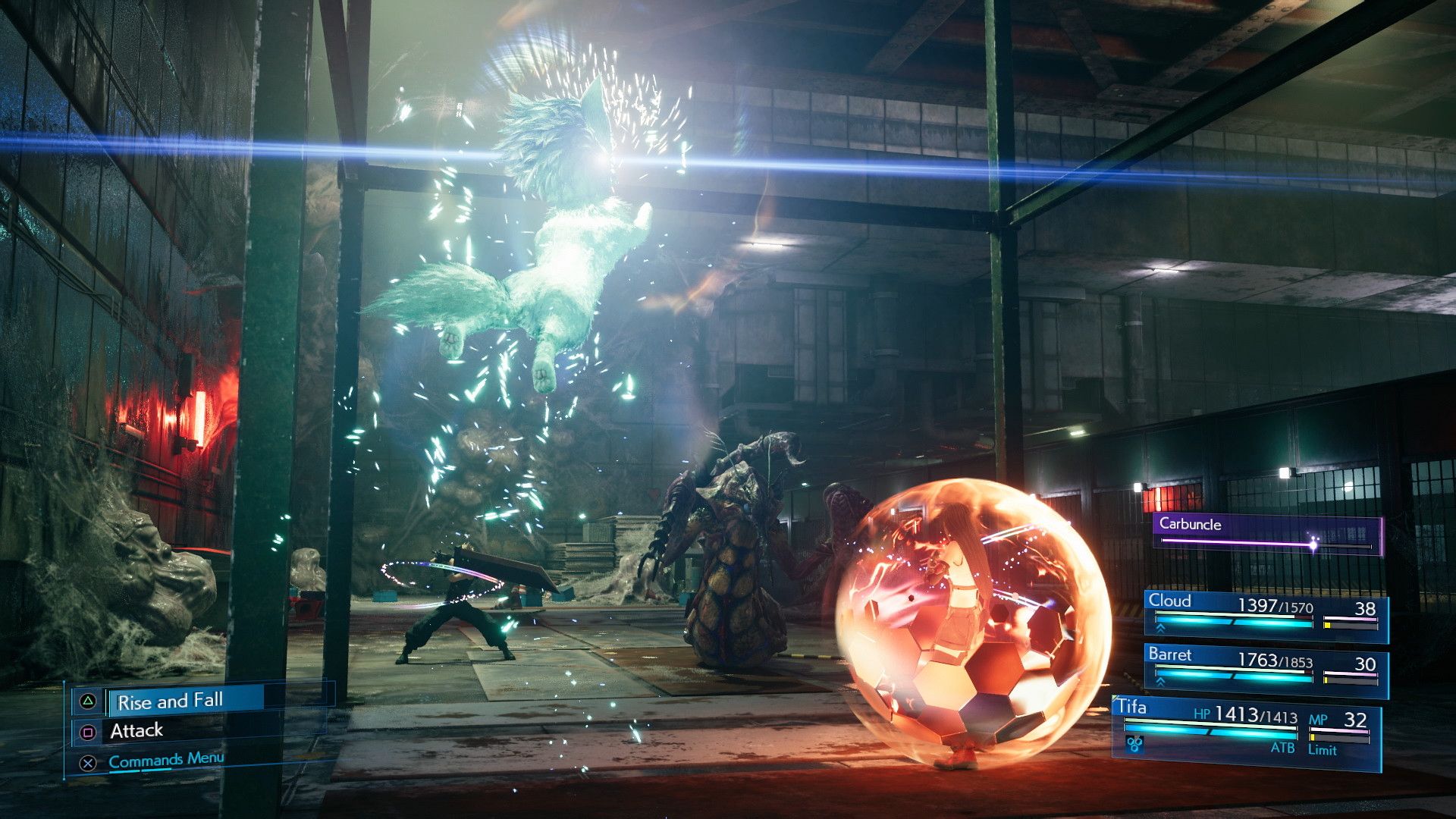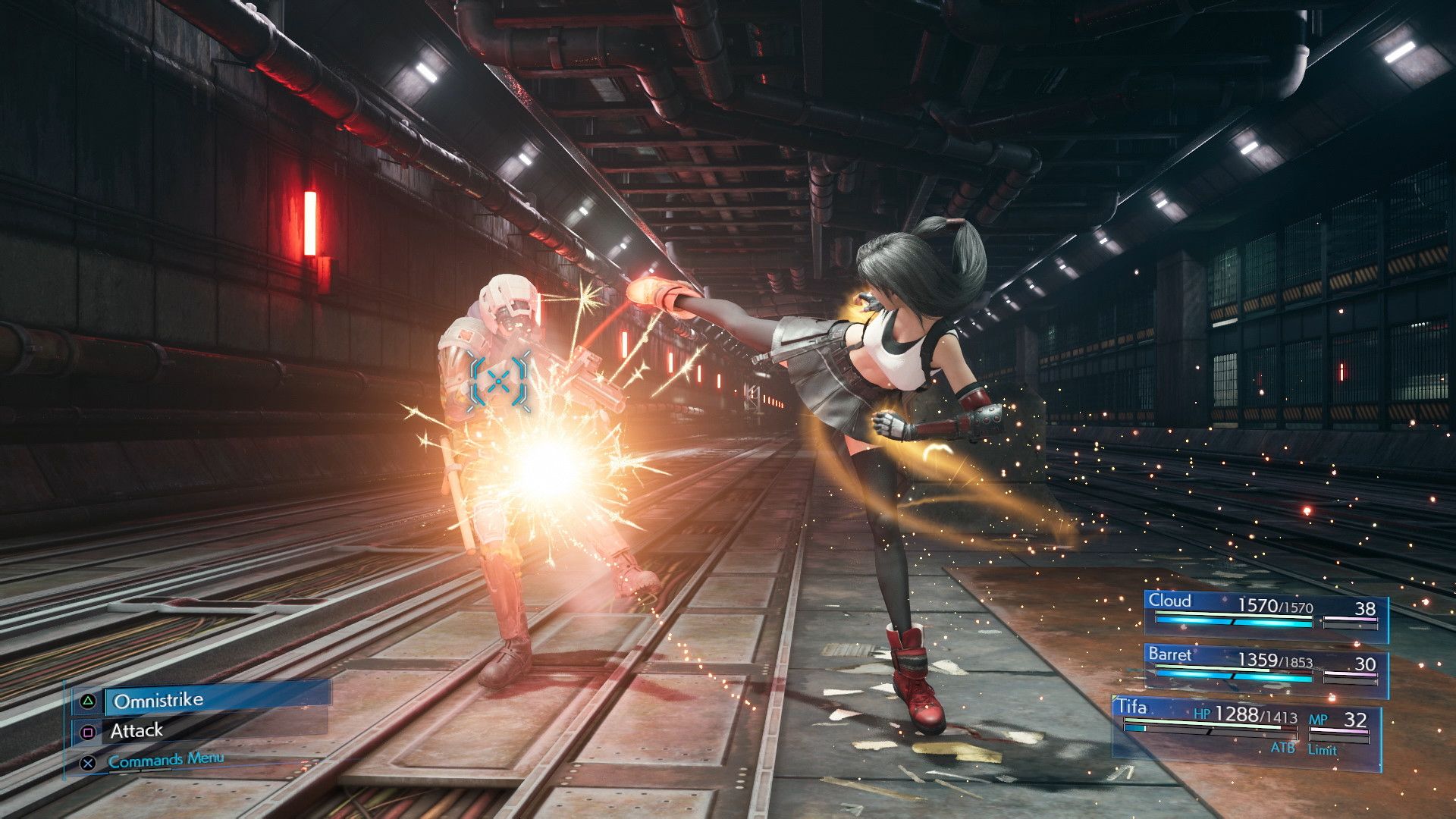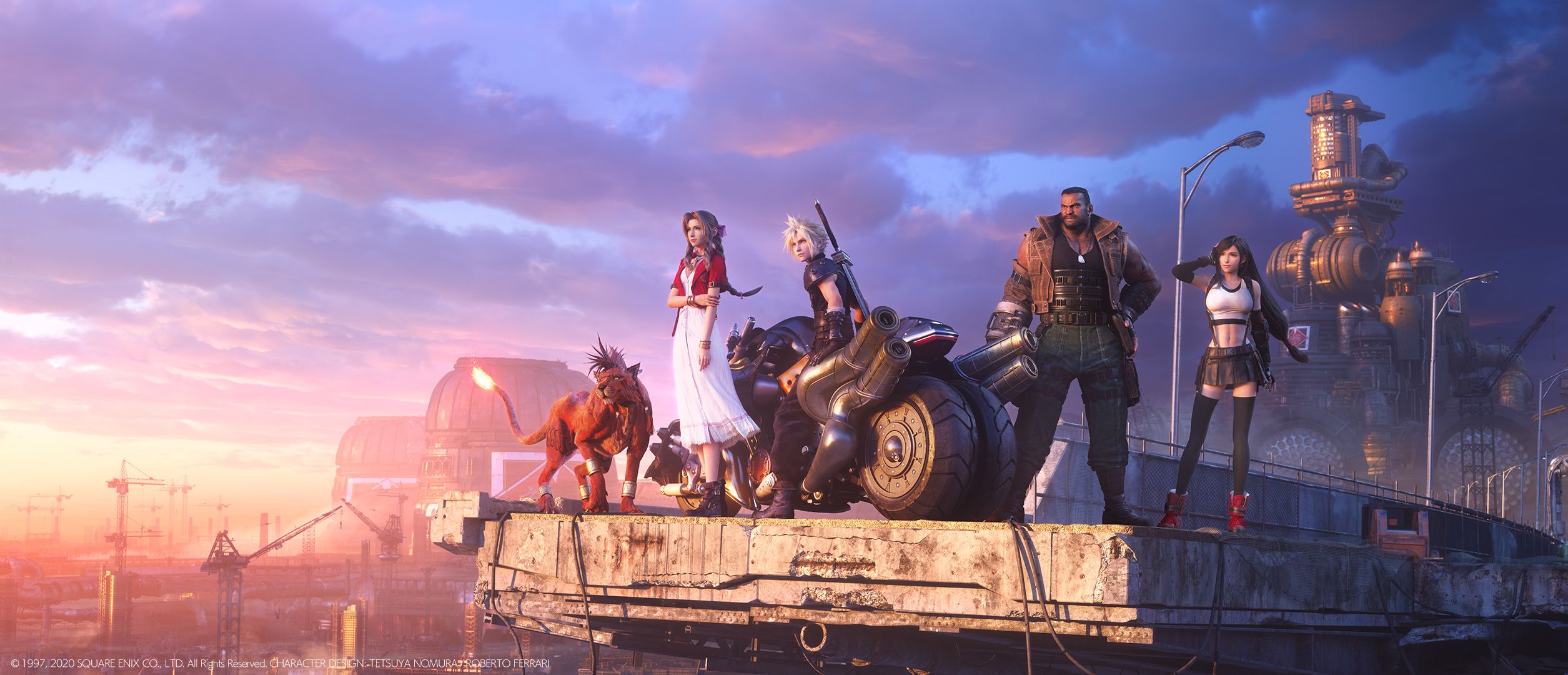I'll admit, I'm a turn-based JRPG purist; I believe in the depth of strategy that is unmatched in a traditional role-playing game. Very few action RPGs can match, especially considering Square Enix's last forays into the genre were...less than exemplary. Naturally I was disappointed when Square decided to forgo my beloved ATB gauge system for the allure of fast-paced flashy action. But coming in to try out Final Fantasy VII Remake, I put that bias aside and tackled the game with fresh eyes.
And my verdict? This game has almost completely convinced me of its merit -- in both its very existence and why the genre shift was justified.
A quick synopsis of the start of the plot for those who may not be familiar with the original: the game's story follows Cloud Strife, a mercenary who joins an eco-terrorist organization named AVALANCHE to stop the world-controlling megacorporation Shinra from using the planet's life essence as an energy source.
[pullquote]"This game has almost completely convinced me of its merit -- in both its very existence and why the genre shift was justified."[/pullquote]
As this is an action RPG, enemies are scattered throughout the environment and you immediately engage with them once you're in range. Basic combos are executed using the Square button and holding it down lets off attacks that hit multiple opponents. You also can target groups of enemies or sections on a single enemy for more precision by using R3 to lock on.
There are special abilities that each party member possesses, which are accessed through the Triangle button. For instance, Cloud can use Triangle to switch between his Punisher and Operator stances; the latter is great for its fast movement and attack speed while the former is much slower yet capable of extremely powerful blows. Other examples are Barret's Overcharge, Tifa's Uppercut, and Aerith's Tempest.
Remember how I said that Square did away with ATB gauges? Well, that's not exactly accurate. Each party member has at least two empty ATB gauges, which fill as you attack and take damage. These gauges, much like in the original Final Fantasy VII, are your lifeblood. You cannot take any action other than Attack or Limit if there is not at least one gauge filled. Therefore, one of the biggest and most pulse pounding aspects of combat is the constant switching between characters to utilize these gauges as they fill up.
Once at least one gauge fills, you can enter Tactical Mode, which lets you choose between Abilities, Spells, and Items as well as later options such as Summons and Limit Breaks (though Limits behave a bit differently). Abilities are where a variety of powerful attacks are located, each with its own unique effect. Choosing which Ability to use at the right moment and figuring out how to mitigate each one’s ATB cost is one of the keys to victory.
Next are Spells, which is magic derived from orbs of coalesced lifestream (the lifeblood of the planet Gaia) called Materia. Each Spell uses one gauge and are extremely important in combat since they can bypass a high physical defense and deal major damage. Many enemies also have elemental weaknesses and casting the right spell lets you take full advantage of that. For instance, mech enemies are weak to Thunder, so casting that Spell deals bonus damage. The Items option lets you use items collected or purchased during battle and they basically have no charge time, making them extremely useful in a pinch.
[pullquote]"These gauges, much like in the original Final Fantasy VII, are your lifeblood."[/pullquote]
Summons make their return in this game and unlike in vanilla Final Fantasy VII, they play a much deeper role in battle. You use all your ATB gauges to Summon and then your summoned ally stays for a set period of time, denoted by a special gauge that drains over time. They automatically attack enemies when summoned, though you can set certain patterns for them. When the gauge expires, they leave after casting one final Summon Spell on the enemy.
Limit Breaks return as well, and they’re just as flashy as you remember. Each character has a unique Limit with its own range and effect. Unlike any other move, you can use Limits no matter what. And also unlike the original game, Limits do not replace the Attack option, meaning you can actually save them until you need to break them out during a key moment.
Materia as mentioned before in relation to Spells, is the main mechanic of Final Fantasy VII Remake as it serves as the magic system. In order to use a Materia it must be equipped to a piece of equipment, which has a set amount of Materia slots: some linked, and others unlinked. Just as in the original FFVII, the majority of Materia Spells that can be used in combat are attack spells (such as Fire or Thunder), buff spells (like Protect), and healing spells (like Cure) among other types. There’s also a special type called Support Materia that is used to augment the effects of battle usable Spells and can do so through linked Materia slots. For instance, if you link a support spell that raises magic damage dealt with a Fire attack Materia, that will enhance the power of that Fire. However if you simply equip those same two Materia into unlinked slots, the support one will have no effect.
A brand new game mechanic, which seems to be inspired from later Final Fantasy games (particularly Final Fantasy XIII), is called Staggered. During a sortie, each enemy has a Pressured Gauge underneath their HP Gauge. As you attack enemies that gauge slowly fills, with some Abilities having the effect of greatly increasing it. Once it fills up, the opponent is Staggered and they topple over completely unguarded, leaving them wide open to critical damage. It’s an excellent system that’s perfectly crafted to handle stronger enemies and bosses and is absolutely essential for defeating them in Final Fantasy VII Remake.
As I adapted to the genre shift and learned the ins and outs of combat through trial and error, it occurred to me how well-suited this change to action-style gameplay was to Remake. Allowing characters to move freely around the battlefield and attack at will adds this sort of frenetic pacing to combat. Coupled with the fun and often funny dialogue between characters during and post-battle, it makes the whole game feel more alive and exhilarating. For new players, this means they can jump right into the fray without having to adjust to turn-based combat that slows downs the pacing of the missions. And for the returning players, it better represents how the game felt to us when we first played it, versus how it would actually play if they remained completely faithful to the classic ATB turn-based system.
One other concern was alleviated for me as well, which was the difficulty of each sortie. Many action RPGs are notorious for brain AI reducing the game to a mind numbing button-mash fest. While there is a scale of weak to strong enemies in any given group, Final Fantasy VII Remake does an excellent job mixing up the red-shirts with some truly challenging combatants that force you to carefully consider each move, lest you be cut down prematurely. It's refreshing to play such a strategic action title, an experience I haven't felt since my last foray into the Tale of franchise.
[pullquote]"Final Fantasy VII Remake does an excellent job mixing up the red-shirts with some truly challenging combatants that force you to carefully consider each move."[/pullquote]
During my extended session with Final Fantasy VII Remake, I was able to play through the entirety of Chapter One, and sections of Chapter Two, Seven, and Ten. Chapter One covers the famous Sector 7 Mako Reactor opening mission, which opens in the same pulse pounding fanfare that fans of the original game will fondly remember. The entire firstchapter is paced perfectly as you learn the ropes of combat and fight off waves of enemies.
The AVALANCHE members are all brimming with charm and personality in every single interaction (especially Jessie!), but the banter between Cloud and Barret cannot be understated as the two play off each other very well. Easily one of my favorite moments is when Barret needs to walk between Cloud and Jessie but makes the extra effort of pushing Cloud to the side with his gun arm. Even when Barret isn't constantly questioning Cloud's integrity, he still manages to convey his hostility through body language cues, and I live for that kind of character storytelling, folks.
The mission culminates in the game's first boss battle against the Scorpion Sentinel and the fight pulls no punches (and don't worry vets, Cloud doesn't give you completely wrong advice about when to attack it). The battle also serves as an effective way to test your skills so far, whether you understand Materia, the ATB Gauge system, how to use each characters' strengths effectively during battle, and other hallmarks from the original game
This chapter really sets in what to expect from Remake. While newcomers will have the chance to fall in love with the characters, story, and gameplay, returning veterans can look forward to plenty of surprises and new expansions to the plot's presentation.
Chapter Two starts right after the Mako Reactor 7 blows up as AVALANCHE splits up to meet back at their base of operations. Taking control of Cloud again, I was tasked with navigating through the rubble of the area immediately surrounding the reactor. As I played through this section, I recalled what scenarist Kazushige Nojima said about how the presentation differs in the remake version versus the original, the latter which required players to use their imagination to supplement the graphical limitations of the PlayStation.
This approach to Remake’s presentation permeates every aspect of the game. As Cloud passes by civilians, you hear their frightened conversations as they worry for their safety and their loved ones. A couple pieces of dialogue really stood out to me in particular: a man fretting about his son who lives mere blocks away from the destroyed area around the reactor, and a now displaced family worrying about where they’ll go next.
Between moments like these and certain other events that I won’t spoil here, human elements are extremely pervasive in Final Fantasy VII Remake and serve to add an almost intimate touch to these large scale events. It’s a reminder that they have a huge impact on everyday people and that impact is extremely important -- you can’t, and shouldn’t, turn a blind eye to it.
That said, in terms of gameplay, this section is the weakest. Though there are some great skirmishes, a standout for me being the tense and strategic fights with the Huntsman enemies, this section feels like it's padded out a bit too much. What really makes it so noticeable is that Cloud is alone, so there's no banter to distract you from wave after wave of enemies.
[pullquote]"Human elements are extremely pervasive in Final Fantasy VII Remake and serve to add an almost intimate touch to these large scale events."[/pullquote]
The next portion I played was Chapter Seven, which is the Sector 5 Mako Reactor mission starring Cloud, Barret, and newcomer Tifa. Immediately I noticed a substantial difference in the way Cloud and Barret interacted, the two being far more relaxed and comfortable around each other. Aiding that is Tifa, whose naturally soothing yet no nonsense presence balances well with the gruff men.
Early on the party is made aware of a new super combat mech, called the Air Buster, and quickly comes across a way to sabotage it before their inevitable clash. There are several rooms that contain a key card. One key card can be exchanged for a debuff on Air Buster (it takes away a component and sends it to the disposal room) and there are a few choices available: M Units that give the party items during the fight, AI Programming which slows down the mech's finger beams and general speed, and the Big Bomber Shells that reduces the amount of times it can use its strongest attack.
Later on the team encountered two rooms, one that lead to the boss and the other to the disposal room. They're both blocked by locks on the door that use a lever system to unlock. In other words: a mini-game! And even something as simple as a lever puzzle had tons of dialogue variation and banter to keep you entertained long after you finish.
As an aside, somewhere located in one of these rooms is a vending machine called "Potions and Music," which lets players purchase a variety of battle items as well as soundtracks from the game to listen to on the side. The aesthetic of the kiosk is just great, with this funky sort of jazzy music that plays while you shop, and it's a simple yet useful quality of life feature to be able to replenish items in combat zones.
The main attraction, the Air Buster, really is as grand and powerful as you'd expect. The entire fight is crafted to be difficult with a variety of attacks and sequences that force you to switch between characters and best use their abilities once again, as well as constantly heal, use Limits, Spells, or even Summons. There are so many strategic options at play and it's exhilarating to figure out what works best for you in the heat of battle.
The final segment I played, which comes from Chapter Ten, was relatively short. It starts with Cloud waking up to find both Tifa and Aerith still knocked out. You then have the choice to approach one of the two ladies and wake them up. This is mere conjecture at this point, but I believe that the scene is related to affection points. For those not in the know, these are hidden point values that determine how certain events unfold later on between parties members.
After that came the Abzu boss, the first non-mech one I fought in this section and it was quite the challenge. Its high physical attack allowed it to deal massive damage to anyone close by. But Aerith is a great counter for this boss, as she both attacks from a distance and has high magic which compliments her healing Spells well. As I fought Abzu I noticed how differently it moved from the mech bosses; because it was a flesh and blood foe, it moved much faster and way more erratically. This was by far the hardest boss I battled in this play session, but that made my victory all the more satisfying once I eventually defeated it.
[pullquote]"This is a remake that will impress both newcomers and veterans in equal measures -- a task very few games of its kind are able to pull off."[/pullquote]
As I played, I soaked in the gorgeous graphics and luscious details of each environment in Final Fantasy VII Remake, admiring how they lovingly reflect the aesthetics of the original while adding a depth that only current-gen technology could pull off. However, because of how far graphics have come since those days, much less is left to the player’s imagination, which means much more care and thought had to be given to how the story elements and character animations would be presented.
I mentioned before about one of my favorite scenes involving Barret pushing Cloud out the way with his gun arm. Such a scene was never present in vanilla FFVII; we only had his words to reflect his hostility towards Cloud. And believe me, the dialogue in this remake is fantastic. But the inclusion of non-verbal moments like that, that convey how characters feel about each other and the broader happenings of the events unfolding around them, shows that the development team considered the best approach to portraying things that now must be explicitly shown. Seeing that level of attention to detail given to some of my favorite characters in gaming made me that much more appreciative of what Remake has to offer.
Despite those few moments of obvious padding, Final Fantasy VII Remake is a game full of life and details. It takes the fond memories and rich world building that made the original Final Fantasy VII so beloved and manages to improve upon it in nearly every aspect, while still making the protagonists, villains, Midgar and its denizens feel fresh and exciting. This is a remake that will impress both newcomers and veterans in equal measures -- a task very few games of its kind are able to pull off.
Final Fantasy VII Remake will release for PS4 on April 10, 2020. For more on the game, check out why Final Fantasy VII Remake may have won over our Features Editor Ryan Meitzler, and why Staff Writer Cameron Hawkins believes it looks to be the biggest achievement for JRPGs in over a decade.

